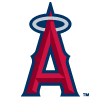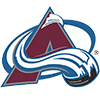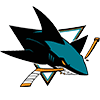Rookie receivers have offered more profit in recent years and drafters in Underdog Best Ball leagues are understandably trying to stay ahead of that curve by diving deep into the extremely talented 2021 rookie wide receiver class. This three-part series will look at this rookie receiver class and try to determine which ones are worth their current prices and which ones are overrated by the market.
This article is the second part and breaks down Terrace Marshall, Amon-Ra St. Brown, Dyami Brown and Josh Palmer. You can read the first part here -- it addresses Ja'Marr Chase, DeVonta Smith, Jaylen Waddle and Rondale Moore.
Terrace Marshall, CAR (119.1 Underdog ADP)
Marshall is very likely to be at least an average starting receiver in the NFL. There's also a good chance that he's much better than average. Though overshadowed by Justin Jefferson and Ja'Marr Chase initially at LSU, his production never lagged efficiency-wise and when his role increased in the 2020 season Marshall's production arguably got even stronger. He'd ideally add some weight to his 6-foot-3, 205-pound frame, but his pro day testing was adequate if not strong – a 4.4-second 40, 39-inch vertical and 125-inch broad jump are all good marks, though potentially unlikely to hold up in a combine setting.
It's easy to determine that Marshall is likely good – what's more difficult is specifically anticipating how he fits into the Carolina offense. The open role at receiver was held previously by Curtis Samuel, who played mostly in the slot and almost exclusively underneath (7.1 ADOT, 16th percentile). The role also entailed frequent ballcarrying – 41 carries in 658 snaps. Now, Marshall can definitely run from the slot, but he can't run those routes Samuel did, and he can't take most of those carries. Samuel is a true burner (4.31 40) with a denser build than Marshall's, not to mention a run-friendly skill set as a former running back. Marshall is somewhat fast but a bit skinny, making him a better intermediate and deep target than a YAC threat from the slot. If the Panthers force Marshall to run the same routes as Samuel they will likely be displeased with the results, but if they call for slot routes farther downfield than in 2020 then Marshall should be good in that particular function. It's also possible that the Panthers will just move Marshall outside and give more slot snaps to DJ Moore and Robby Anderson, which would be the ideal outcome for all three.
If Marshall can't earn snaps outside then in the slot he might face formidable competition from tight end Dan Arnold – basically a big slot receiver – and wideout David Moore, who played for Seattle last year a role that closely resembled Samuel's in Carolina. Arnold is particularly threatening on the question of red-zone slot snaps, and David Moore stands out for his background as a ballcarrier and underneath target (8.9 ADOT, eight carries for 61 yards on 482 snaps in 2020).
The Panthers have options, in other words. Marshall may be the best of those, but it will probably take some redesigning of the offense for that to happen, be it calling for longer slot routes or preparing Marshall to take snaps outside rather than the slot. The worst-case scenario is probably one where Marshall plays around 30 snaps per game while producing efficiently but rotating situationally with Arnold and/or David Moore. That's not a bad worst-case scenario in the 11th round, especially given that the best-case scenario is one where Marshall gets his requisite downfield routes and thrives with them.
Verdict: Fair price
Amon-Ra St. Brown, DET (157.7 Underdog ADP)
St. Brown was a superb college receiver and was one of the best in USC's strong recent run of wideout prospects. St. Brown was probably a better player for USC than 2020 second-round pick Michael Pittman, for instance, and given that his skill set as a wide receiver is convincing. Unfortunately for St. Brown, he lacks the athletic tools of someone like Pittman, and concerns over St. Brown's speed led him to fall into the fourth round, behind a handful of receivers who weren't anywhere near his level in the college game. With just a 4.61-second pro day 40 at 6-foot, 197 pounds, St. Brown had one of the worst size-adjusted speed scores among wide receivers in this class. That lack of physical momentum might keep him limited to the slot.
It's not ideal to draw the Slot Specialist label, but it's also not the end, especially for a player with as much skill as St. Brown. Perhaps he can't win regularly on the boundary, but he can win regularly in the slot and if he gets reps there he should produce accordingly. The question about his fit with Detroit, then, is how many snaps he can win from the slot his rookie year.
Breshad Perriman and Tyrell Williams are the likely starters outside. Quintez Cephus is probably third outside. Williams and Cephus will probably qualify from some handful of slot snaps additionally, even if by four-wide alignment. With tight end T.J. Hockenson and running back D'Andre Swift likely drawing more snaps and targets from the slot than most TE/RB combos, St. Brown can't afford to lose any slot snaps to Williams and Cephus. While it's true that Jared Goff's checkdown tendencies could afford St. Brown a somewhat high per-snap target rate, it's also true that there will likely be meager yardage and especially touchdown production in that sample of targets. For St. Brown to be useful he needs to clear 40 snaps regularly in games. It's easy to imagine him doing so in a shootout or catch-up script, but if the Lions run a two-wide set then St. Brown is probably on the sideline. It's worth noting that St. Brown is more expensive than both of the receivers expected to start ahead of him – Perriman at 191.8 and Williams at 160.1.
Verdict: Slight reach
Dyami Brown, WAS (178.0 Underdog ADP)
Brown was an excellent pick for Washington in the third round. Although slightly built and not quite a burner, Brown is plenty fast and has uncommon big-play ability in his skill set. Over his age-20 and 21 seasons at North Carolina he caught 106 of 175 targets for 2,033 yards and 20 touchdowns – good for a catch rate of 60.6 percent at 11.6 yards per target in an offense that completed 64.9 percent of its passes at 9.4 yards per attempt. The lag in catch rate (4.3 percent) is not nearly as significant as Brown's 2.2-yard surplus in yards per target. Brown doesn't look like a high volume receiver in the NFL, but he projects to consistently offer unique explosiveness on a WR2-type target workload. While drawing 23.1 percent of North Carolina's targets he produced 28.6 percent of their yardage and 29.9 percent of their touchdowns through the air.
Good as Brown might be as a prospect, he can't challenge Terry McLaurin for targets. Almost no one in the league could. Curtis Samuel is also likely a more talented receiver than Brown – Samuel was excellent in 2020, and his 4.31-second combine 40 at 196 pounds illustrates a major speed difference between himself and Brown, whose 4.45-second 40 was timed in a pro day setting at 189 pounds. While Brown should continue to show promise, it's unfair to expect him to keep up with a tandem like McLaurin and Samuel.
Of course, Samuel has been hurt all summer and training camp with a groin injury, and he has an injury history before that too. In the event that Samuel misses time, Brown would have a good shot at offering mainstream fantasy utility. It's important to note how uniquely explosive he was at North Carolina – it's impressive enough for a receiver to exceed his team's baseline by 2.2 yards per attempt, but it's especially rare to see that with touchdown production like Brown's. Twenty touchdowns is a lot for just 106 receptions, and a significant downward pressure on his per-target yardage. Brown didn't just produce, he produced an uncommon number of plays that completely broke the defense in front of him.
With that said, it's difficult to see a way for Brown to produce if both McLaurin and Samuel are healthy. Adam Humphries might run ahead of Brown for most slot looks, especially underneath or intermediate targets, so Brown might need an opening outside to so much as see the field. A Humphries absence would be another way for Brown to see the field, but in that scenario he's still unlikely to draw many targets if he has to compete with McLaurin and Samuel.
Brown might require a teammate injury to come through big for his investors, but in the 16th round the risk is negligible. It's nearly two rounds later than St. Brown, who likely has a lower fantasy floor, particularly in Underdog's 0.5PPR scoring. Indeed, there isn't much left on the board in the range where Brown tends to get picked, and Brown is more talented with more realistic upside than most of the alternatives.
Verdict: Fair price
Josh Palmer, LAC (187.6 Underdog ADP)
Palmer appears to have a good shot to open the season as the Chargers' third receiver behind Keenan Allen and Mike Williams. The third-round pick out of Tennessee was a sub-baseline contributor in 2020, his age-21 season and the first where he had to serve as Tennessee's lead receiver. Palmer was more efficient as a role player the two prior years, when he had the luxury of Jauan Jennings and Marquez Callaway drawing most of the defensive attention. Palmer caught 50.8 percent of his targets in 2020 at 7.3 yards per target in an offense that completed 62.8 percent of its passes at 7.2 yards per target. Palmer's 0.1-yard YPT surplus is overruled by his 12-point catch rate deficit. This is a player who struggled to make his shots when he had to make more than third-most in the offense. This normally portends a role player rather than a starter. Over his final three years Palmer caught 90 of 169 targets for 1,416 yards, meaning he caught 53.3 percent of his targets at 8.4 yards per target in an offense that completed 58.9 percent of its passes at 7.7 yards per attempt. He was right at the baseline over the broader sample, but in the one season with the bull's eye on him Palmer's efficiency fell off drastically.
Palmer's production isn't bad overall, but it's also safely short of 'good.' This is a problem because he otherwise has no standout athletic traits to project skill set growth. The Tennessee quarterback complaint doesn't work, either – Jennings and Callaway didn't need it. Starting NFL receivers generally produce much more than Palmer did in college, and he compounds this concerning trend with average at best athletic testing. The fact that Palmer is bigger than most (6-foot-1, 210) gives him some positional versatility and his broad jump (124 inches) was strong especially for a frame like his, but his 40 was average at best (4.52 pro day) and his vertical (34 inches) was poor. There is nothing here to establish a benefit of the doubt.
Of course, if the Chargers give Palmer the benefit of the doubt anyway then these potential limitations won't matter in so far as they relate to Palmer's playing time. They bode poorly for his ability to produce with that playing time, however, and really push back against the idea that he has any upside to offer. There are worse picks to make in this range, but Palmer isn't among the best either.
Verdict: Inconsequential








































